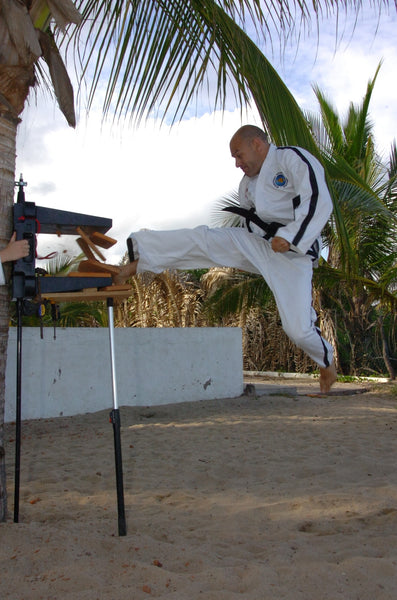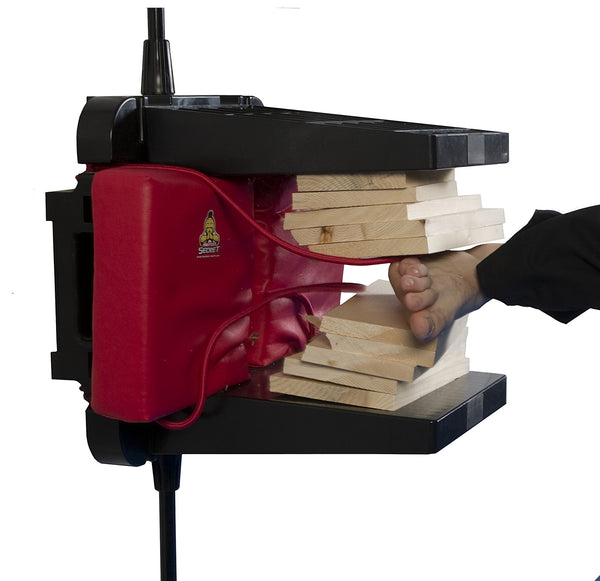Power Reverse Knife Hand (Ridge Hand)
In addition, the wrist, elbow, and shoulder all experience pressure at an angle that is weaker than other strikes done with the arm, and are therefore at a greater risk for injury. Knowing that and doing it anyway takes practice, self-discipline, focus and determination, but the feeling when you do it, and the photos . . . are amazing!!
The tool used to break the boards is a lopsided v-shaped area found along the lower end of the pointer finger bone where it junctions with the base of the thumb (not the edge of the fingers like the stop point fighter I mentioned in a previous article). The thumb is tucked under the palm and points towards the pinky finger, but does NOT touch the
palm. Flex it and ensure it is under constant contraction. To lock and protect the joints in the hand, contract and lock the wrist.
Horizontal Strike
Measuring for height: Have the center of the board approximately 1” below your shoulder when standing in a parallel stance.
Measuring for distance: (if breaking with the right hand) Stand in a parallel stance to the left of the board with your right shoulder touching the edge of the board and heels in line with the front of the board. Move the left foot to the left approximately 1⁄2 a parallel stance MORE.
Then step back into a left walking stance with the right foot. Pull the left foot back and shift into a right L-stance guarding position.
Pre-action: Th e non-breaking hand is extended palm down towards the edge right of the board, and the breaking hand is extended to the rear at shoulder height palm up. All the body weight is shifted to the rear foot with the front foot off the ground and the body leaning back and knee flexed.
Strike: Rise up to your full height and step forward, swinging the striking arm towards
the board and the reaction hand to the hip. Just before impact, the elbow and shoulder must be locked while slightly flexed to prevent hyper flexed or broken joints. On impact,
form a left walking stance. The striking tool is rotated to a palm down position with the
fingers off extended beyond the board. Ensure that the hips are rotated to a reverse 1⁄2 facing position, and ensure that the striking shoulder is at least one side fist in the front of the board.
Downward Strike:
The boards should be about knee height, and the relative positioning is similar, with the starting position being a parallel stance and a 1⁄2 to the left with the heel even with the top of the boards.
Step back with the right foot into a left walking stance, and then shift into a right L-stance, pivoting as before. Point the reaction hand downwards towards the boards, and proceed in the same manner as for the horizontal strike, with the exception that you drop onto the right knee.
Keeping the shoulder above/in front of the boards is VITAL to prevent injury.
As always, I suggest you practice with easier boards or pads until you develop the
timing and conditioning that will allow you to safely and successfully break to your maximum capacity.
Also in News

Prove it… Break it!
So how can you prove what martial arts has taught you? Through Board Breaking of course!!!

For want of a board holder…..
Without a board holder, students and instructors had to hold boards for each other. The joke back then was “Why do I need a board holder? I have students?” The problem was:

